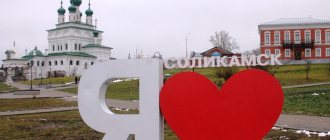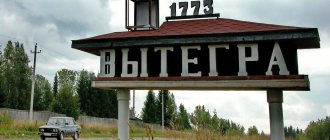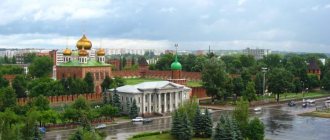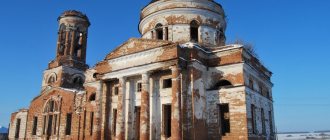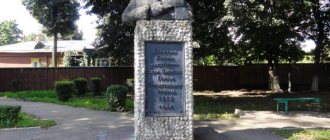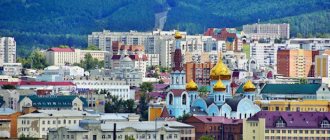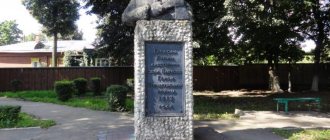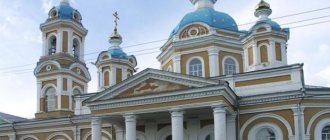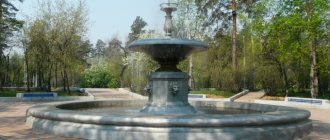The small ancient Ural city of Cherdyn, located 300 km north of Perm, was the center of Perm the Great from the 15th to the 17th centuries. Here was the beginning of the annexation of the Urals to Russia.
Today, the ancient region with its centuries-old monuments surprises tourists with an immersion in antiquity: the preserved patriarchal appearance of the city is a real museum of Ural history.
Like Rome and Moscow, the oldest city of the Urals is located on the right bank of the Kolva River on seven hills, the names of which tell about the traditions and way of life of the Ural residents in the old days.
History of Cherdyn
The first settlement on the right bank of the Kolva, the Vyatka settlement, arose in the 8th century. Mention of it occurs in 1451 in the Vychegda-Vym Chronicle.
It became the first Russian city at the crossroads of the Urals trade routes between Muscovy and Siberia (from west to east) and between Pechora and the Kazan Khanate (from north to south).
In the 14th century, the city became the heart of Perm the Great, and in 1472 it became part of the Moscow state. City administration was supported by the voivodeship and customs, and after the voivode was transferred to Solikamsk in 1636, Cherdyn’s heyday ended.
Additional Information. For the first time, Novgorodians penetrated the banks of the Kolva along portages from the Pechora tributaries. This route played an important role in the development of the region until the beginning of the twentieth century.
Cherdyn changed its location several times. Initially, the city was built up with wooden houses, which were often burned out during fires. They were restored with the façade facing the river. At the end of the 18th century, after another rampant fire, only 10% of the houses remained in the city. As a result:
- indiscriminate construction stopped;
- drew up an urban planning project providing for straight streets;
- Brick buildings began to be built.
Since that time, only stone buildings have survived - temples, which violated the geometrically correct urban layout.
Travel plan
Saturday.
06:00 Meeting at Kompros, 29 (near the main building of the Polytechnic University), departure from Perm. 10:00 — We arrive in Cherdyn. Breakfast, rest from the road. Let's get acquainted with memorable and interesting places in Cherdyn. 14:00 — Departure to the village of Nyrob. Arrival in the village of Nyrob, we visit the place of imprisonment of Boyarin Romanov, the center of memory of M.N. Romanov, St. Nicholas and Epiphany churches. 17:00 — Departure to the former settlement of Uzhginskaya (abandoned village). Arrival in Uzhginskaya, we walk and see the sights. 19:00 — Departure to Perm. Along the way, visit Narrow Street (at the discretion of the instructor, depending on the time and condition of the group). 01:00 - 02:00 We arrive in Perm on Sunday night.
Attractions
In a territory with a long history, many ancient relics and revered shrines have been preserved. A trip to one of the smallest cities in the Urals will allow tourists to be transported to the atmosphere of the 19th century and get acquainted with the traditions and life of the Urals.
Museums
In the museum exhibitions you can see a collection of exhibits telling about the events of the Ural history and the life of the inhabitants of the harsh land.
Cherdyn Local Lore Museum named after A.S. Pushkin
The oldest city cultural institution began work in the year of the centenary of the great poet and was dedicated to him. Later it was combined with the archaeological collection and renamed the Cherdyn Local History Museum.
The exhibition is located in the mansion of the former county government, an architectural monument of the 19th century. It is represented by the following meetings:
- antique wooden sculpture;
- rare coins;
- great-grandfather's icons;
- ancient military equipment;
- unique printed and handwritten publications of the 16th – 18th centuries.
One of the most interesting exhibits is the three-pound shackles of Mikhail Romanov, the uncle of the first Russian Tsar from this family. The peasants considered the shackles miraculous, made pilgrimages to them, and hoped for their help. Now visitors are allowed to try on the chains.
On a note. Travelers are interested in one of the few surviving icons of St. Christopher with a dog's head, who was considered the patron saint of hunting. The image of the “dog head” was banned by the church and destroyed.
Museum of the History of Faith
The unique exhibition “Temples of the Cherdyn Land”, located in the premises of the Church of the Assumption of the Virgin Mary, opened in 2000. Upon entering the refectory, a fresco on the theme of the Last Judgment catches the eye. The collection contains:
- authentic antique examples of confessional utensils;
- priestly vestments;
- a collection of especially revered icons by local and Athonite icon painters;
- highly artistically executed Holy Shrouds, decorated with precious threads and beads.
On the 2nd floor, fragments of the ancient temple iconostasis were restored.
Architectural monuments
A special type of material and spiritual cultural heritage is noteworthy real estate objects of national significance. Most of the surviving stone buildings were built in the 18th – 19th centuries.
House of merchant Remyannikov
A spectacular house in a classical style, which belonged to a merchant family, stands in the central part of the city, on Uspenskaya Street, 55. From it you can enter through a stone gate into the shop where the owner sold shoes. Now the mansion houses the city registry office and the passport and visa department.
Women's gymnasium
The building of the former educational institution, opened in 1880, is located on Yurganovskaya Street, 60. Having started work as a two-grade school, by 1908 it housed an 8-grade gymnasium. After graduation, students from different classes who studied there worked in schools in Cherdyn and other cities.
After the revolution, the building was used to house a pedagogical school, then a hospital, and a boarding school. Now there is an exhibition hall of the Museum of Local Lore.
Hospital building
The popular architectural monument of the 19th century, located on Prokopyevskaya Street, became famous throughout the country thanks to Osip Mandelstam, who was exiled for harsh judgments against Stalin. The exile depressed the poet, who tried to commit suicide by jumping out of a hospital window.
Water tower
The historical building, located on Yurganovskaya Street, 92, played not only a practical role in the life of the city, supplying residents with water for 100 years.
But it is considered a spectacular example of engineering art of the late 19th century. A tall 3-story tower in the shape of an octagon was built according to the design of A. Gansberg.
Monuments and memorials
Residents of Cherdyn perpetuated the memory of many compatriots, significant events and even memorial buildings.
Art object “Deep in Time”
The attraction is located on the Defensive Shaft of the Cherdyn Kremlin. Fascinating excursions and quests are conducted in the pristine ecologically clean area.
Milepost
On Uspenskaya Street, an interesting memorial sign attracts attention - an old pole with black and white stripes with indicators of distances to Moscow and Tobolsk. Here was the zero mile of the Sovereign Road, connecting the center of Russia with Siberia.
Art object Map in search of Anfalovsky town
The art object is located at: Yurganovskaya street, 67/1. Legend says that 600 years ago, the famous strongman and robber Anfal Nikitin built a fortress, the location of which is now unknown.
Researchers (geographers, archaeologists, historians) have made various assumptions about its location. The search for the town by our contemporaries allows us to organize exciting quests.
Akulina's shop
The decorative object is located in the working village of Nyrob on Oktyabrskaya Street, 14 and is a memorial plaque on the site of a former landmark of Cherdyn.
Tombstones at the grave of the merchants Yurganovs
A monument of art of regional significance of the 19th century. – a memorial to the largest merchant family of Cherdyn. It is located on Mamin-Sibiryaka Street, 17, in the fence of the Church of St. John the Evangelist - north of the refectory. It consists of 3 cast iron and 2 stone decorative tombstones with a wrought iron fence in the Gothic style.
Memorial sign to the patrons of Cherdyn
The monument to Cherdyn sponsors is located next to Komsomolsky Square, near the Assumption Church. The granite monument stands in a small chapel with lace forged sides, which was moved from the place of torment of the Nyrob slave boyar Romanov.
Memorial pillar with the icon of St. Nicholas the Wonderworker
The miniature chapel is located on the street. Mamina-Sibiryaka, 56-58. It was built in memory of the one erected in the 17th century. and the wooden St. Nicholas Church destroyed by fire at the end of the 18th century. Inside the monument there is an icon of St. Nicholas and a tablet with the history of the fiery disaster.
Tree of family happiness
The art object is located on Sovetskaya Street near the central square of Cherdyn Uspenskaya. Traditionally, newlyweds come here to Viburnum Alley after registering their marriage.
Wall of Legends
Yurganovskaya Street is called Cherdyn's Nevsky Prospekt: in addition to the branch of the Museum of Local Lore, there is an exhibition of works by students of the children's art school, which is called the Wall of Legends, against the backdrop of antique-style street lamps and benches.
Observation deck (Trinity Hill)
On the bank of the Kolva there are two corner square wooden towers - the only structures that have survived from the formerly formidable Cherdyn fortress of the 16th century, which was considered a reliable fortification. The towers have been restored several times. Each of them has an observation deck.
Observation deck (Voskresenskaya Street)
From the top platform of the bell tower of the Resurrection Cathedral there is a view of the entire city, surrounding villages, the Kolva River, and the endless taiga.
Art object for forest industry workers
The decorative object is the first monument to logging workers. The territory is located in the taiga zone, and the forest industry plays a huge role in the life of the region.
Stone with the footprint of the hero Polyud
Near the wooden fortress Spasskaya Tower on the edge of the hill next to the heroic weapons there is a huge cobblestone with a massive human footprint carved into it.
Legend says that if you place your foot in this hero’s footprint and touch the spear shaft with your hand, you can receive part of the hero’s power.
Travel cost
Cost: 2500 rub./person.
The price includes: - transfer by minibus; — instructor accompaniment, excursion.
The price does not include: - tickets to museums, - meals (breakfast to take with you and money for lunch in a cafe/dining room).
Additional costs: Local history museum: 1. adults - 50 rubles. 2. children (from 3 to 17 years), students, pensioners - 50 rubles.
Exhibition hall: 1. adults - 100 rubles. 2. children (from 3 to 17 years), students, pensioners - 50 rubles.
Museum of the History of Faith: 1. adults - 100 rubles. 2. children (from 3 to 17 years), students, pensioners - 50 rubles. 3. visit to the Spasskaya Chapel - 50 rubles.
Interesting places in Cherdyn: where to walk
Every street in the tiny town smells of Ural antiquity. During the walk you can get acquainted with the history of this harsh region.
Polyudov stone
The legendary landmark Polyud is located on a hill on the elevated bank of the Kolva. A huge cobblestone measuring 3 by 2 meters with a groove similar to the imprint of a size 80 shoe.
The legend tells about the hero Polyud, after whom the mountain is named. The boulder across the river can be seen from afar. It looks like a huge petrified wave.
Semigorye
Cherdyn has something in common with Rome and Moscow - they all stand on seven hills. The names of 5 Ural hills are associated with church themes.
All of them, except Monastyrskaya, are named after the temples on their tops. The hillocks are located along Kolva from north to south. On Trinity Hill, archaeologists found the initial settlement. This is where the excursions begin.
Kolva River
The city is planned along the wonderful Ural river, which was once navigable. On its banks there was a brisk trade in valuable furs and supplies, and there were merchant warehouses - monuments of a bygone era.
On the other side, travelers are amazed by the boundless expanse of magnificent nature. The river also saw fierce battles between the local army and the Moscow army.
Merchant streets
Rich merchant families lived in the historical center of Cherdyn, on Yurganovskaya and Uspenskaya streets. Mansions with adjacent estates and shops have been preserved here. Now residents have restored the old names and partly the original appearance of the central streets in the city.
All architectural monuments are equipped with special signs. Merchants' houses, whose windows are closed with shutters and bolts, attract attention.
Trinity settlement
On the hill of the same name, many artifacts were discovered during excavations: women's jewelry, arrowheads, coins, a bronze cross. The oldest buildings belong to the 12th century. The settlement withstood 11 enemy sieges.
Vyatka settlement
The archaeological site on Vyatka Hill is the ruins of an ancient settlement that was the center of Perm the Great. In 1913, the hill was planted with a grove in honor of the anniversary of the imperial house. Now at the top of the hill there is a park that looks like a pagan sanctuary.
Literary Square
A small park dedicated to the Cherdyn poetess Svetlana Volodina was opened in 2015. It is located on the corner of Sobornaya and Yurganovskaya streets.
Around the well-kept flower bed there are 3 marble monuments in the shape of open books. On one page there is a portrait of O. Mandelstam, D. Mamin-Sibiryak and S. Volodina, on the other - poetry or a quote.
Cherdynskaya outpost
At the corner of Sovetskaya and Uspenskaya streets, right at the gates of the Assumption Church, tourists can see a real old outpost: a striped black and white gatehouse and the same barrier.
The outpost is reproduced in a real place where several centuries ago there was an outpost to control the trade route and capture fugitive peasants.
